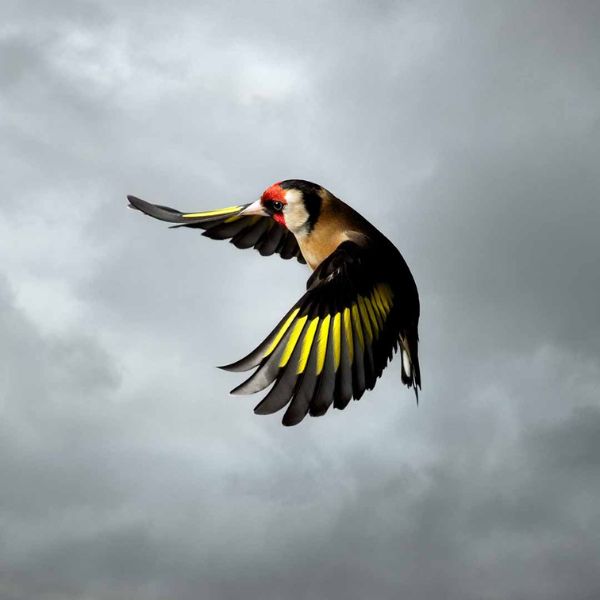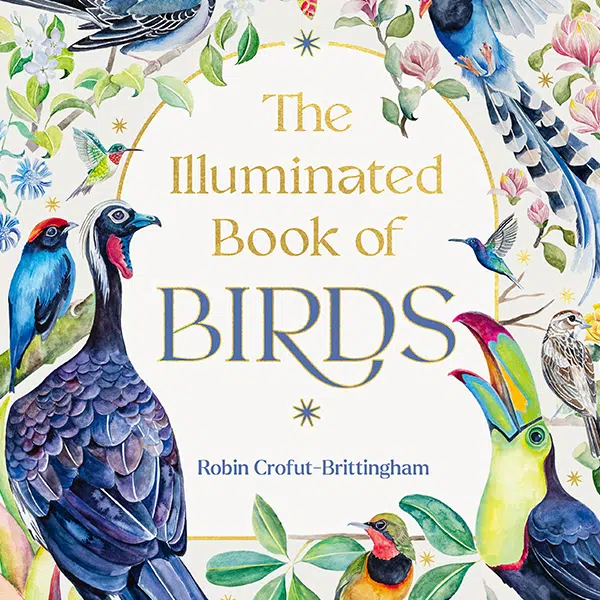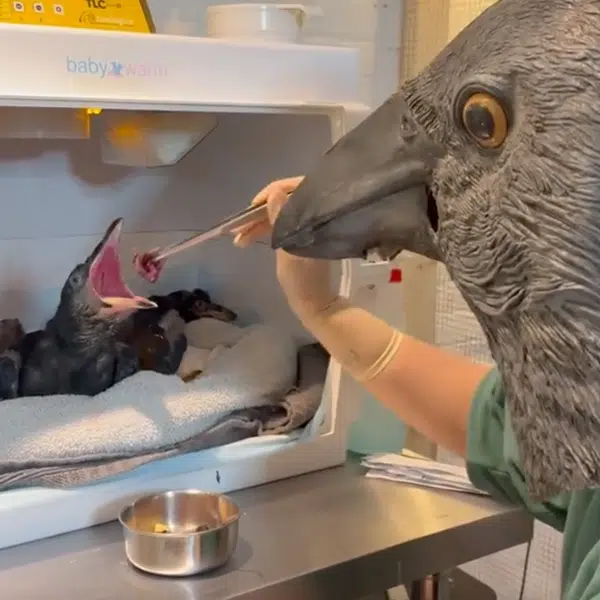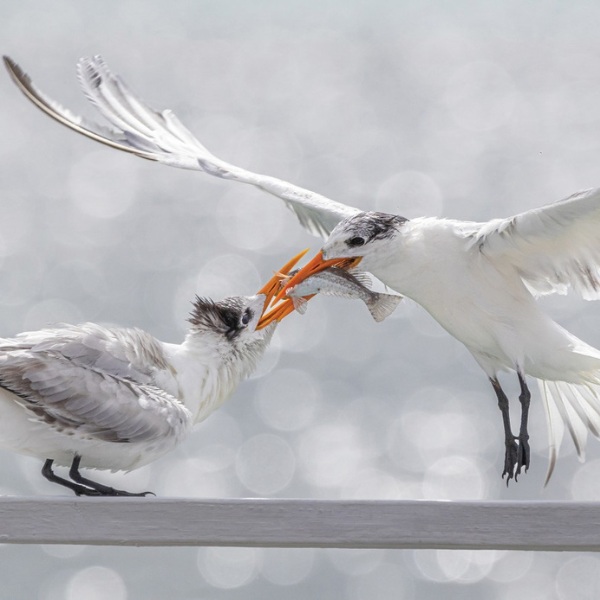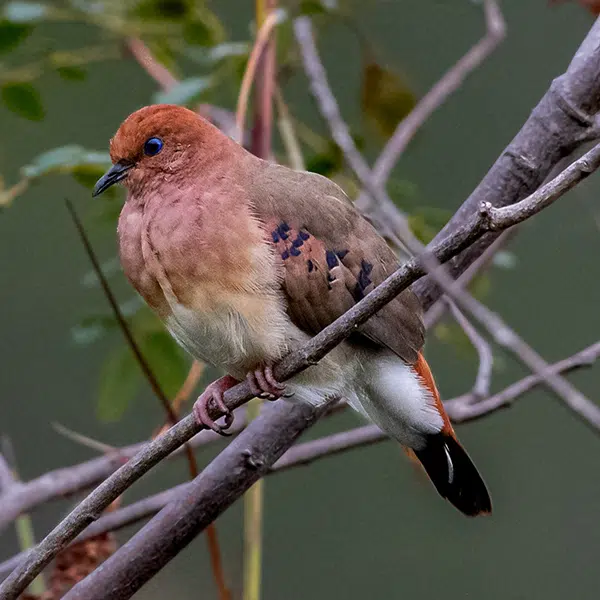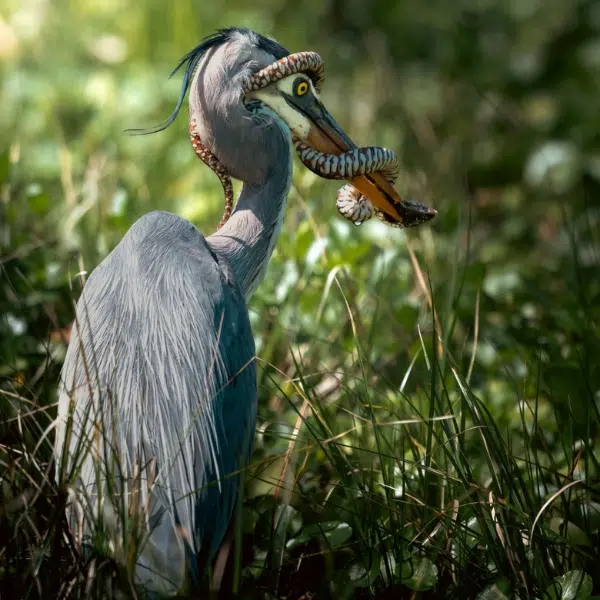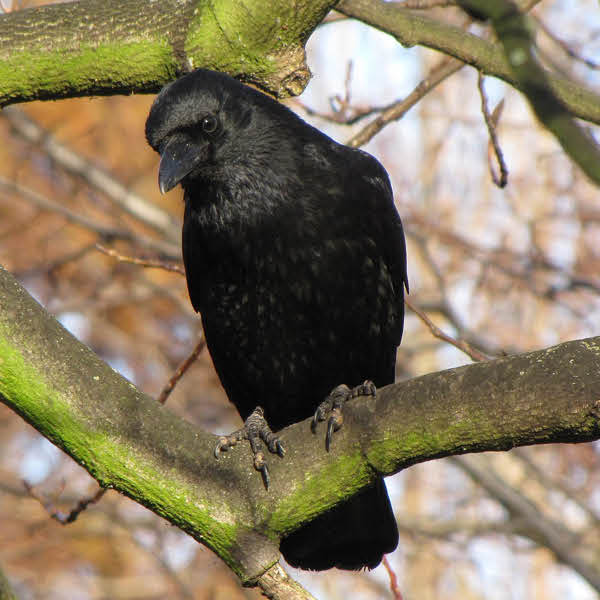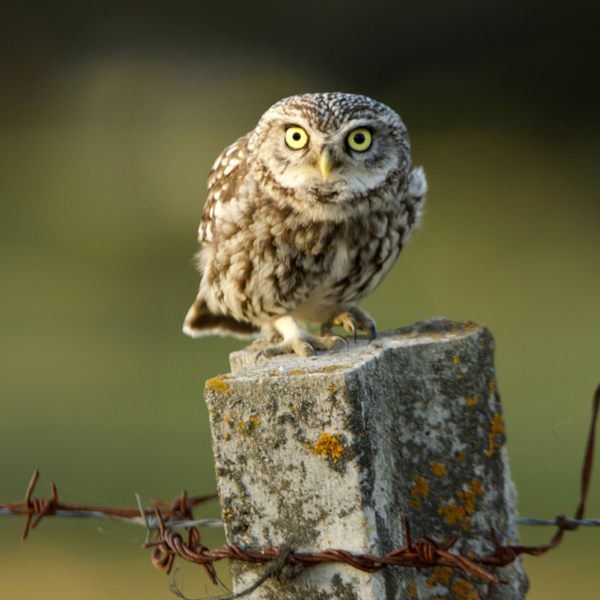
Stock Photos from Szczepan Klejbuk/Shutterstock
Anyone up for a little gymnastics? These little birds are. Measuring just 6.5 inches long, the bearded reedling, or bearded tit, is a stout bird found across Europe. Living in wetlands, they're experts at balancing on the thin reeds that sprout from marshes and perform incredible splits to keep themselves balanced. This songbird, though found in abundance, is actually quite unique and there are no living species that seem closely related to it.
Besides its exceptional balancing talents, the bearded reedling—specifically the males—have a distinctive appearance. Though their name would make you think that they have a beard, they're closer to mustaches thanks to their black facial markings. This contrasts with the female who, while also orange-brown in color, is missing the black markings and grey head of the males. Females also tend to be paler than the males and have darker beaks.
These differences make the bearded reedling a sexually dimorphic bird, which means that the sexes exhibit distinct characteristics aside from their sexual organs. These pocket-sized birds, both male and female, can often be seen sitting calmly between the reeds of marshes and other wetlands. As resident birds, they tend not to migrate unless excessive cold weather pushes them out of their normal habitat.
Bearded reedlings, which are even cuter when they are puffed up and round, are also quite busy when it comes to reproduction. They can have up to four broods a year, with four to eight chicks per brood, which helps keep their numbers up. They're also highly adapted to their environment, eating insects in the warmer months and seeds during the cooler season. To help with the change in diet, they actually eat grit particles to help break down the seed fibers, making them easier to digest.
Though population numbers are healthy, the IUNC recommends maintaining reedbeds or introducing reedbeds as ways to ensure the bearded reedling's survival. They also suggest nestboxes, which these birds will use, if natural nests are in short supply or there are flood risks.
Bearded reedlings are cute, stout birds that live among reedbeds across Europe.

Stock Photos from CameraLex/Shutterstock
They're known for their acrobatic splits that help them hang out among the reeds.

Stock Photos from Ihor Hvozdetskyi/Shutterstock
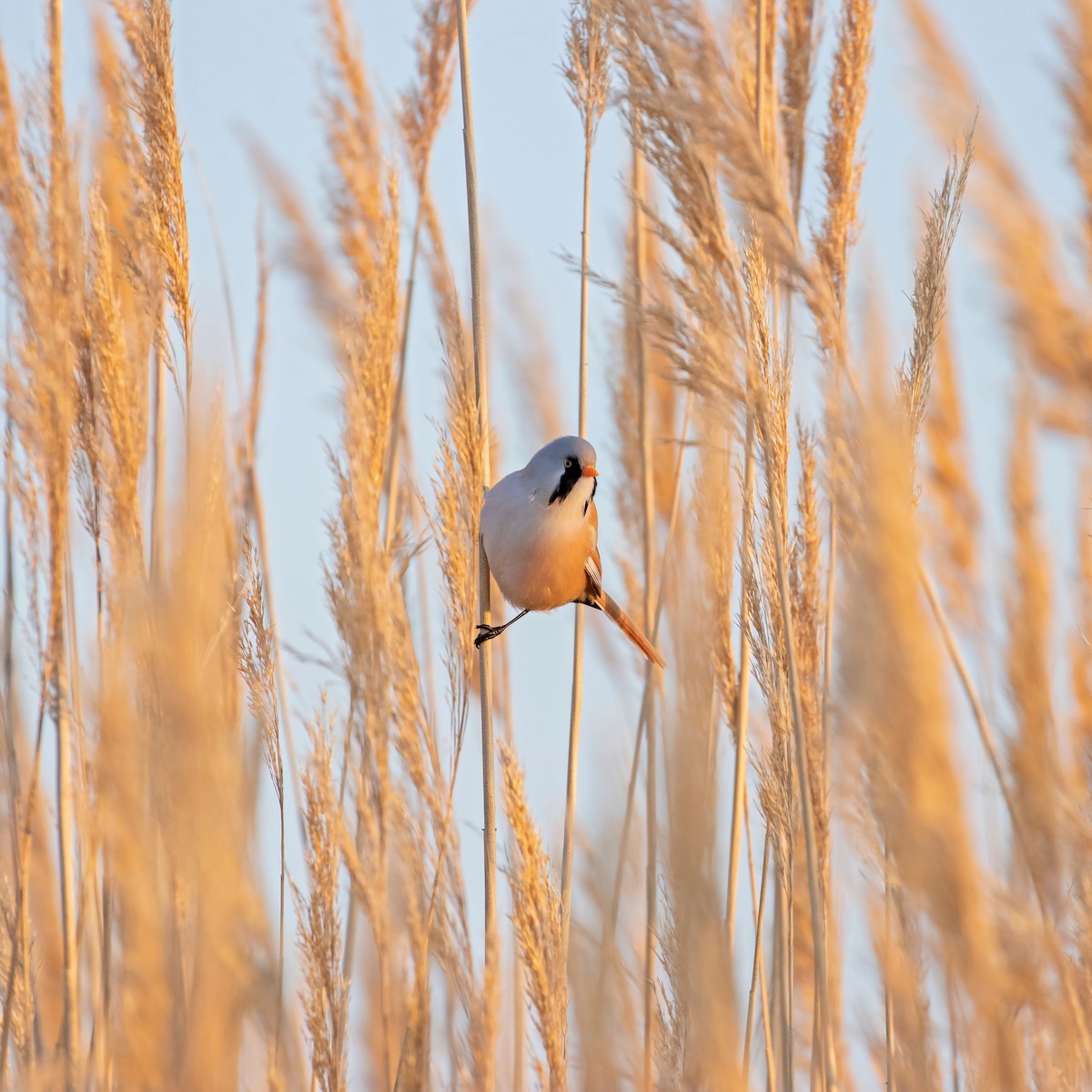
Stock Photos from Ihor Hvozdetskyi/Shutterstock
Male birds have distinct markings like a mustache—not a beard.
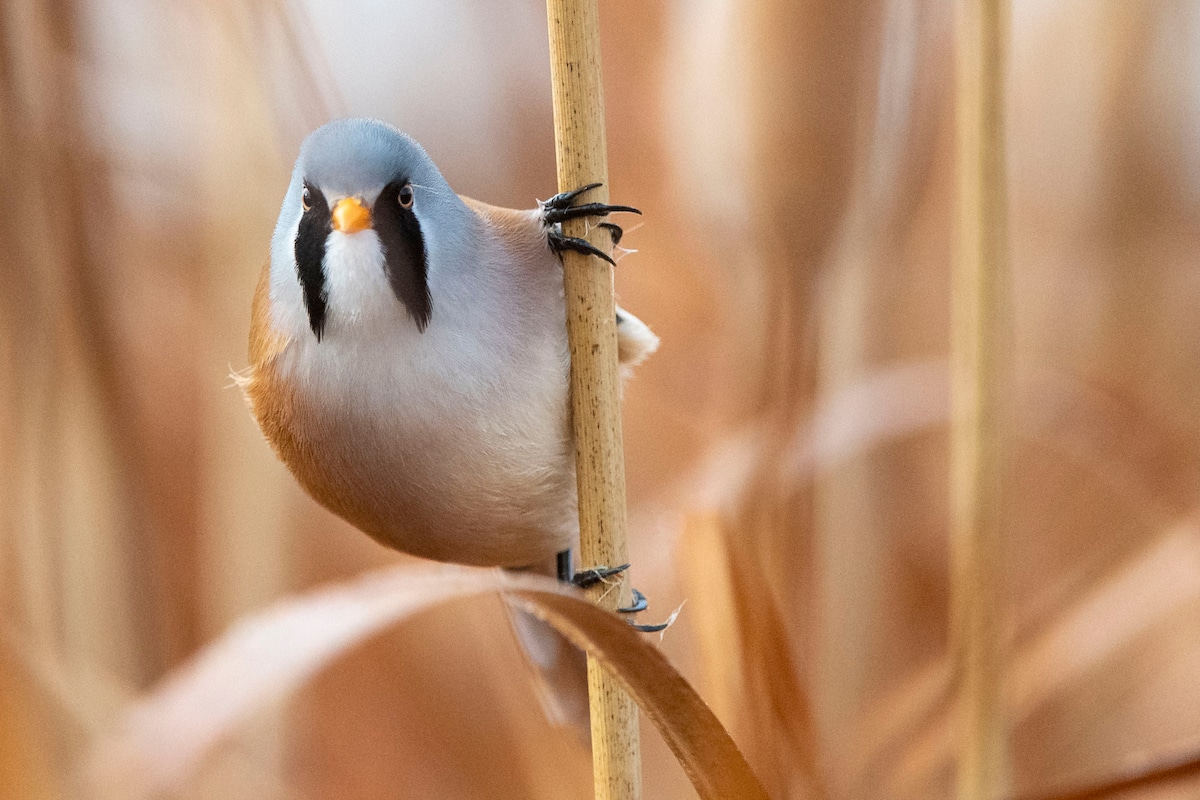
Stock Photos from Jesus Cobaleda/Shutterstock
This contrasts with females, who are paler and have no markings.
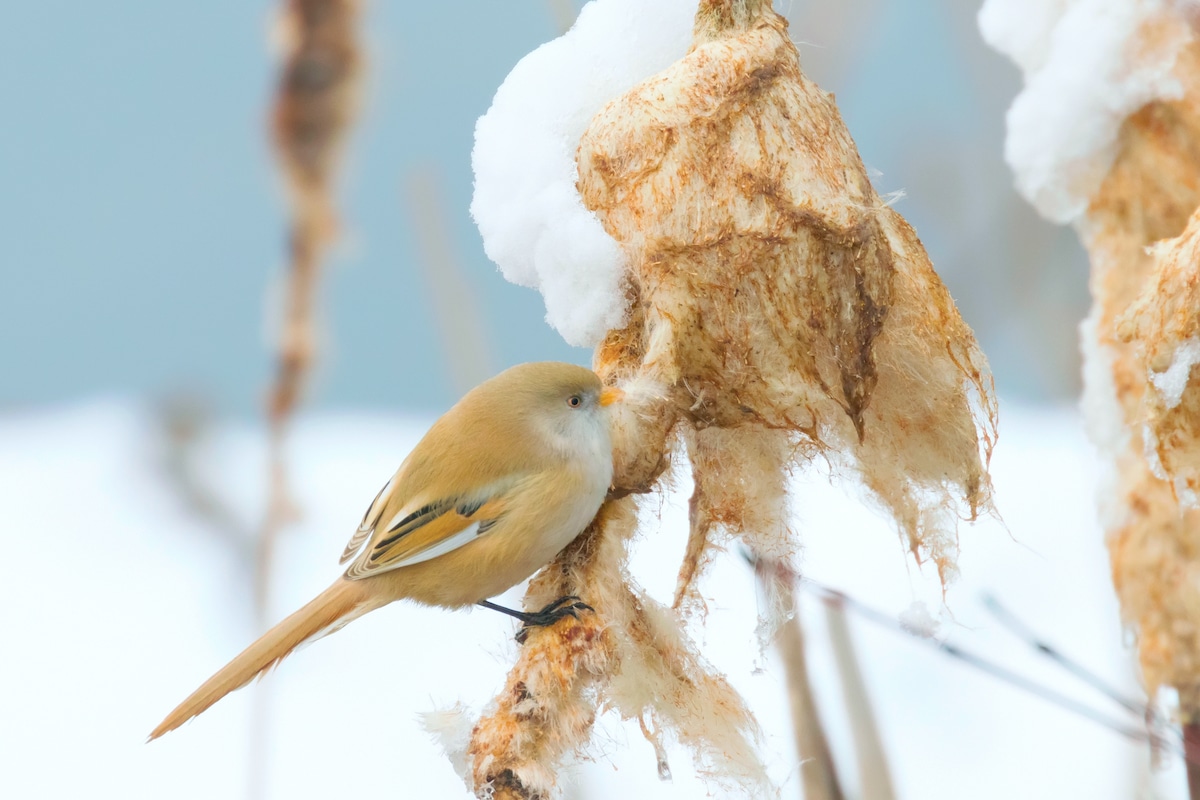
Stock Photos from Allexxandar/Shutterstock
These cute birds are even more adorable when they're puffed up and round.
View this post on Instagram
View this post on Instagram











































































